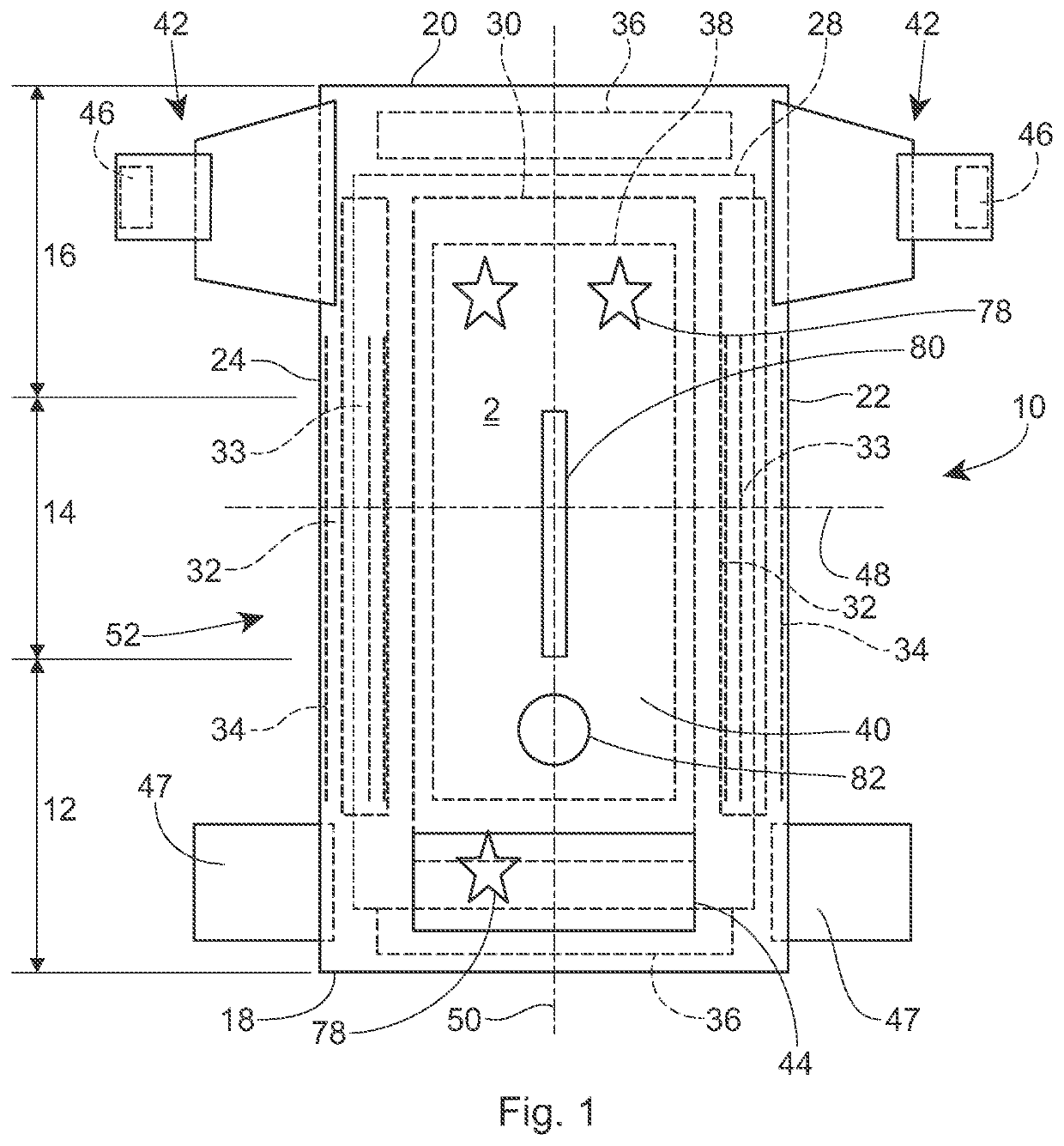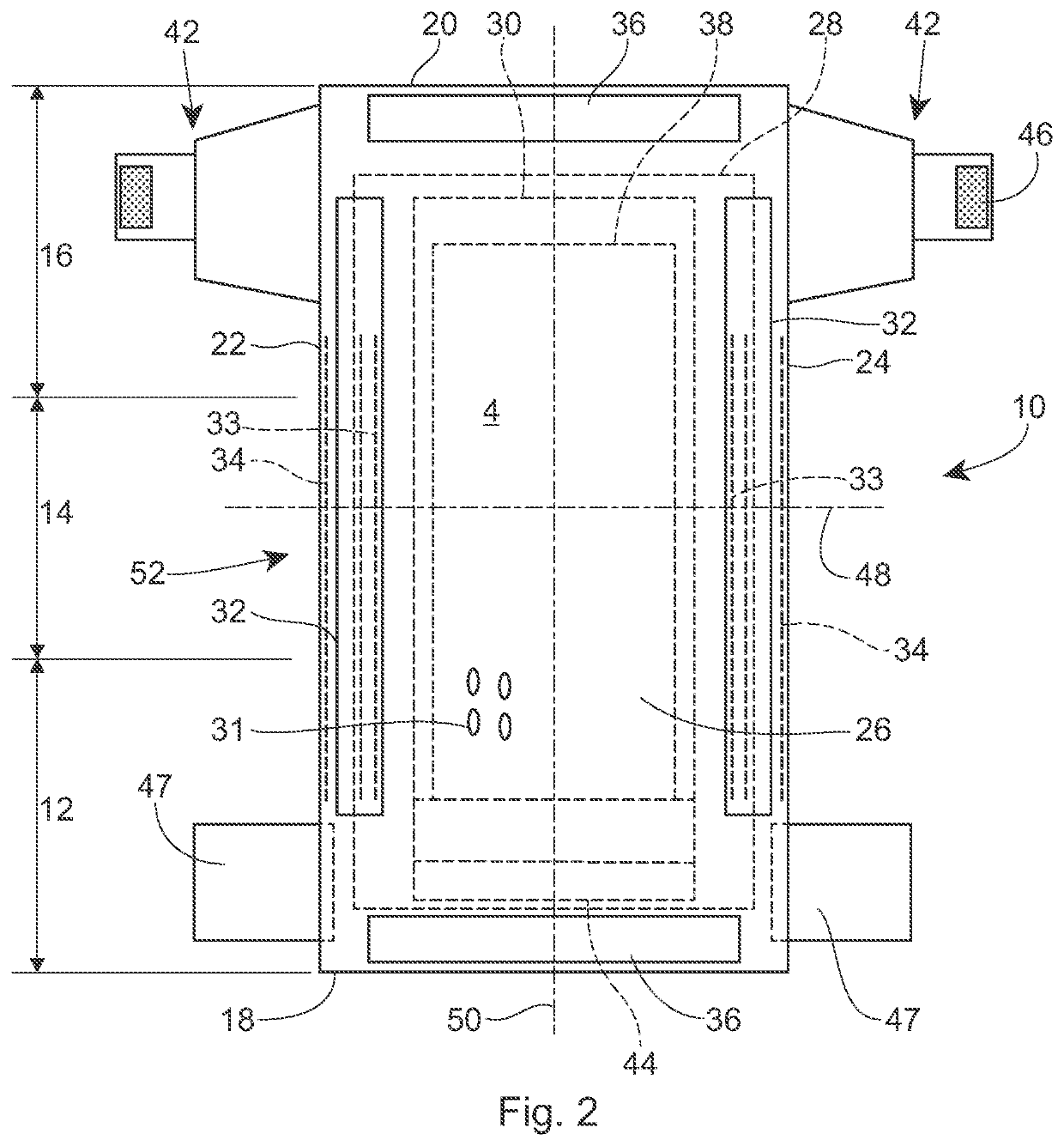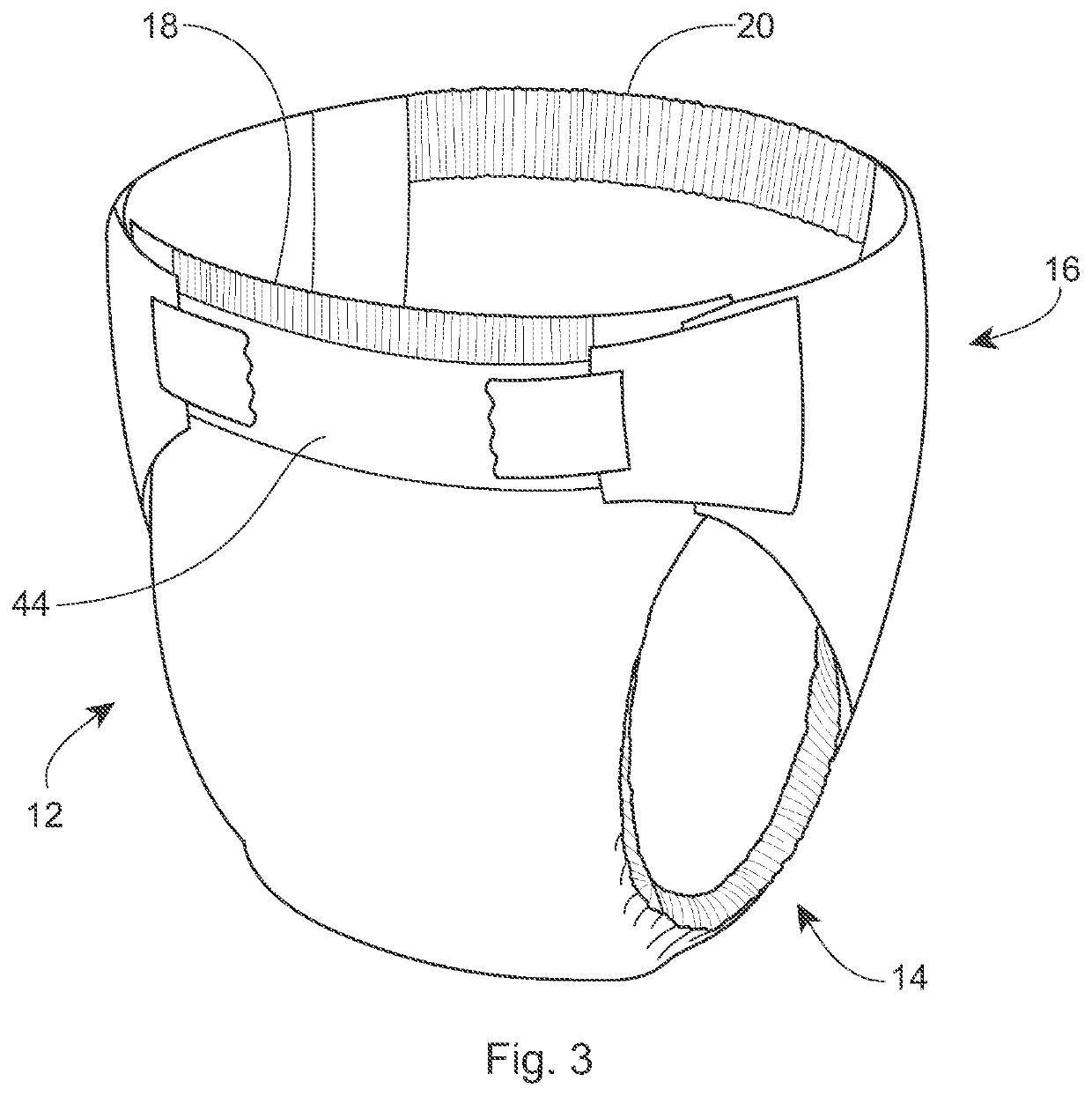Absorbent core with nonwoven web(s) comprising superabsorbent fibers
- Summary
- Abstract
- Description
- Claims
- Application Information
AI Technical Summary
Benefits of technology
Problems solved by technology
Method used
Image
Examples
examples
a) Examples 1-4 with Various Surfactants
[0272]In Examples 1 to 4, needle-punched (also referred to as “needlefelt”) nonwoven webs made of staple superabsorbent fibers and available from Technical Absorbents Ltd. As Product Type 7125 were subjected to spray-coating with various different surfactants and the average acquisition times were determined according to the Modified Fluid Acquisition test method set out above.
[0273]As determined by the test methods set out above, the nonwoven webs had[0274]a basis weight of 300 g / m2 [0275]a porosity of 96%[0276]capacity of 7 g / g,[0277]an amount of extractables of [0278]an amount of titratable soluble of 2.5%.
[0279]The nonwoven webs were cut into rectangular samples each having a width of 170 mm and a length of 420 mm.
[0280]The sample nonwoven webs were laid down on a table and one of the outer surfaces of the nonwoven web samples were spray-coated with 0.5 weight-% of surfactant (see Table 1 for details on surfactant)
[0281]Subsequently, to ob...
examples 5-7
b) Examples 5-7 and Comparative Examples 2-3
[0287]For each of Examples 5-7 and for Comparative Examples 2 and 3, superabsorbent fibers commercially available from Technical Absorbents Ltd. as SAF 112 / 52 / 10 were converted into nonwoven webs. The fibers had a length of 52 mm and a diameter of 10 dtex.
[0288]The nonwoven web had a capacity of 26.7 g / g, an amount of extractables of 21.2 weight-% based on the total weight of the nonwoven web, and an amount of titratable soluble of 27.0%. The capacity and amount of extractable and amount of titratable soluble changed for Examples 5-7 upon heat treatment, see below.
[0289]Conversion of the fibers into nonwoven webs was done by needle-punching. The basis weight of the nonwoven web obtained after conversion was 300 g / m2, the porosity was 96%.
[0290]The nonwoven webs were cut into rectangular samples each having a width of 110 mm and a length of 360 mm.
[0291]The sample nonwoven webs were laid down on a table and both of the outer surfaces of the...
PUM
 Login to View More
Login to View More Abstract
Description
Claims
Application Information
 Login to View More
Login to View More - R&D
- Intellectual Property
- Life Sciences
- Materials
- Tech Scout
- Unparalleled Data Quality
- Higher Quality Content
- 60% Fewer Hallucinations
Browse by: Latest US Patents, China's latest patents, Technical Efficacy Thesaurus, Application Domain, Technology Topic, Popular Technical Reports.
© 2025 PatSnap. All rights reserved.Legal|Privacy policy|Modern Slavery Act Transparency Statement|Sitemap|About US| Contact US: help@patsnap.com



